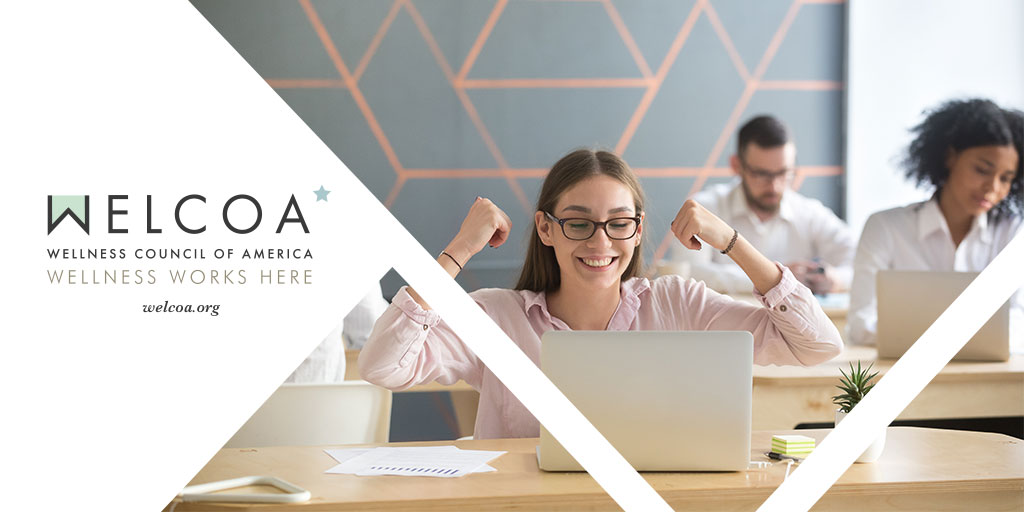By Sara Martin, M.S., Chief Executive Officer, WELCOA
At Policy Research, our wellness committee, WellStaff@PRA, aims to keep us well staffed with well staff. We recognize that our staff are navigating many concerns, stressors, and even crises at the moment. We work hard to decrease burnout and promote well-being in the ways we can, a commitment that’s earned PRA recognition as a Healthiest Employer, Top Workplace, and in the Workplace Health Solutions Index. Integrating practices and referring to resources like those offered from our friends at the Wellness Council of America (WELCOA) help with these efforts. In this guest blog post, Sara Martin, Chief Executive Officer of WELCOA, shares some of the latest data on burnout and gives a first look at strategies noted by experts in workplace wellness for mitigating burnout and its impact.
As we look ahead into 2021, many things seem out of focus and unsure. One certainty, however, is that organizations will need to continue to help employees adapt effectively to life events, which can be difficult to manage and cause stress. Collectively, we need to invest in wellness strategies to help our working humans avoid burning out. We know that resilience allows us to quickly recover from difficulty. When we do not have tools for resiliency, we let stress continue to wear away at us, and we experience burnout. For these reasons and more, WELCOA is proud to announce our focus in 2021 will be Resilience.
Why Focus on Resilience?
Before the crisis of the pandemic was completely evident, WELCOA conducted the 2020 Trends in Wellness Survey to examine our members’ beliefs about, and experiences with, wellness programming. When asked to rank the 3 most important wellness priorities for the year ahead, 63 percent of respondents ranked mindfulness or mental health in the top 3.[i] Now living in the pandemic, working humans are more prone to burnout than ever before. According to a global study lead by Qualtrics, 47 percent of employees report that they’ve felt burned out since the beginning of the COVID-19 crisis. Only half of those surveyed said their employer was doing anything to help them avoid burnout. According to the survey, some steps that have been taken by employers so far to combat burnout include offering flexibility around working hours or performance expectations, making more counseling or mental health benefits available, and providing additional paid time off. [ii],[iii]
The symptoms of burnout are even more concerning. Thirty-two percent of employees who experienced burnout said that they lacked the energy to be consistently productive. Thirty percent said they dragged themselves to work and had trouble getting started. Twenty-six percent said they had become irritable or impatient with co-workers, customers, or clients.
How WELCOA Started Laying the Groundwork to Address Burnout and Support Resilience
This fall, WELCOA’s inaugural Inner Circle on Burnout & Resilience brought together members of the corporate wellness community. They spent 5 weeks exploring the causes and effects of burnout and resilience in the workplace alongside positive psychologist and founder of The Work Happiness Method, Stella Grizont. Here are the five top takeaways they developed for decreasing burnout and building personal resilience:
- Identify What You’re Feeling: Label your specific emotions and practice self-compassion.
- Celebrate Small Wins: Giving yourself credit for small wins gets you on an upward spiral and allows you to look at your day in a more positive light.
- Be Mindful of Emotions You Spread: Gratitude is the easiest way to spread positivity—aim to list three things each day for which you are grateful.
- Set Healthy Boundaries: Constantly neglecting or suppressing your own needs puts you at risk for burnout.
- Create Self-Care Practices: Make time for activities energize you and help you stay in reality.
Check out this full quick guide on beating burnout and building resilience!
[i] WELCOA and CHC Wellbeing 2020 trends in wellness survey. (2020, August). Retrieved from https://www.welcoa.org/resources/welcoa-chc-wellbeing-2020-trends-wellness-survey/
[ii] Werber, C. (2020, August). A new study shows what minorities think of their employers’ inclusion efforts now. Quartz at Work.
[iii] Quartz/Qualtrics study. (2020). Retrieved from https://www.qualtrics.com/m/assets/wp-content/uploads/2020/08/Qualtrics-Quartz-Results.pdf


